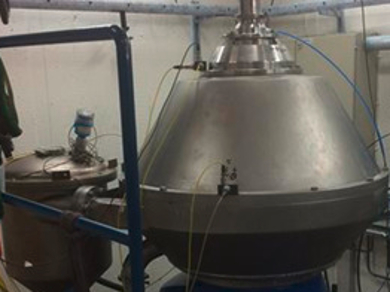High-speed centrifuges are widely used in industry, for example, to separate cells from a fermentation broth. The investment costs are usually low relative to the capacity and the centrifuges have a small footprint. However, further increasing the separation efficiency requires higher rotational speeds, which in turn leads to higher energy consumption. More energy-efficient high-speed centrifuges would be useful.
Stefan Szepessy and Peter Thorwid, Alfa Laval Tumba AB, Sweden, have adjusted the design of conventional high-speed centrifuges, aiming at cutting the required energy at a fixed flow rate in half. By optimizing the diameter and positioning the hermetically sealed inlet (at the base) and outlet (at the top) close to the rotational center of the centrifuge, liquid losses caused by the rotation can be reduced. An electric direct-drive motor minimizes the mechanical losses which are produced by the currently used gear-and-belt drives. And finally, the application of a vacuum reduces the air friction around the rotor.
Altogether, these improvements were able to lower the average energy consumption of high-speed centrifuges by 50 %, while still maintaining the separation efficiency. The power consumption to flow rate ratio is less than 0.5 kWh m−3.
- Low Energy Consumption of High-Speed Centrifuges,
Stefan Szepessy, Peter Thorwid,
Chem. Eng. Technol. 2018, 41, 2375–2384.
https://doi.org/10.1002/ceat.201800292The article is part of a Chemical Engineering & Technology Special Issue on PRODIAS – Processing Diluted Aqueous Systems.




